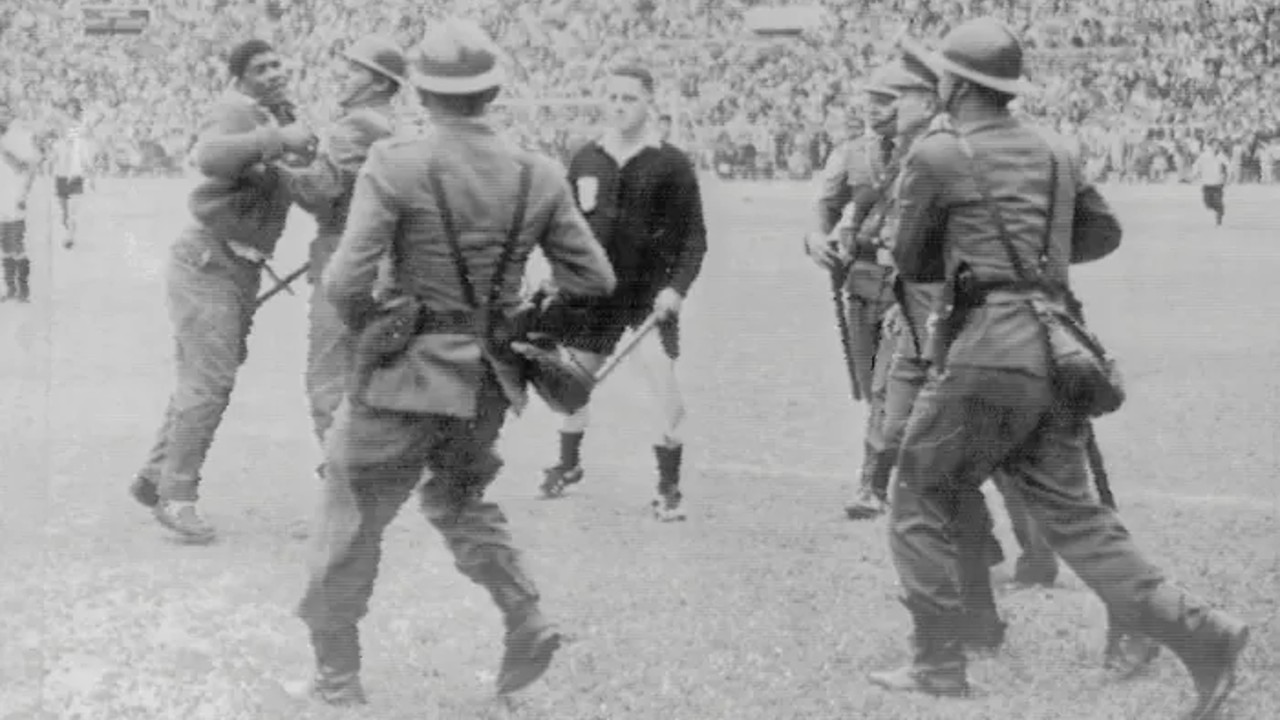Fifty years ago, a disallowed goal in a match between Peru and Argentina resulted in tragedy at Lima’s Estadio Nacional.
The Peruvian government declared a seven-day period of national mourning for yesterday’s football match disaster, in which 263 men, women, and children were murdered, and announced that all burial expenses would be covered.
Hospital officials are still unable to provide accurate numbers of victims. According to radio reports, 500 people were killed, and almost a thousand were injured.
Dr. J. Arias, Peruvian Minister of Health, verified 263 deaths today. Three cops were included in the figure. He proclaimed Lima a “disaster region.”
The time of national mourning begins today. The Government edict declared that work would continue as usual, but all official and public engagements would be cancelled, and the national flag would be flown at half-mast.
The violence began six minutes before full time during an Olympic qualification match between Peru and Argentina for the opportunity to play in the football finals in Tokyo.
Argentina was ahead 1-0 when the Uruguayan referee disallowed Peru’s equalising goal, prompting an irate fans to smash down barricades and stampede onto the pitch. The match was called off.
Thrown tear gas
Hundreds of people were crushed and trampled as a panicked mob pushed for the exits to avoid police, tear gas and dogs. Children and women were thrown to the ground during the rush, but the uncontrollable throng continued on.
Some individuals destroyed a part of the pitch’s wire fence and set fire to seats and terraces. They kicked down a wall in an effort to enter the field and confront the referee. Stones, bottles, and pillows were thrown at the cops, and the pitch resembled a battleground with missiles strewn everywhere.
When police arrived on horseback, a segment of the mob set fire to buses and cars. Reinforcements arrived for the stadium police, who were outnumbered, and several arrests were made.
Meanwhile, a crowd of largely youngsters marched across the street from the stadium, torching private homes, a betting store (which was entirely destroyed), and the Goodyear tyre plant, where firemen extinguished the fires. Youths tossed gasoline-soaked paper into a nearby garage and smashed workplace and residential windows. After a three-hour standoff, mounted police established a barrier to avoid more damage.
Thousands of people, including crying mothers and children, surrounded hospital gates, hoping to find out if their loved ones were among the dead or injured. Seguro del Obrero Hospital alone reported 140 deceased brought in.
Cars were stolen.
At least 100 automobiles were taken by robbers who took advantage of the chaos outside the stadium. Twenty-one detainees, some of whom were classified as dangerous, escaped from Lima jail.
Cardinal Juan Landázuri Ricketts has announced the establishment of a national fund to assist the victims. One million soles (about £13,000 GBP) has already been pledged by government ministers.
In the days following the accident, the projected death toll rose from 263 to 320. In 2012, the Guardian sports blog covered the game in a round-up of Olympic football tales.














